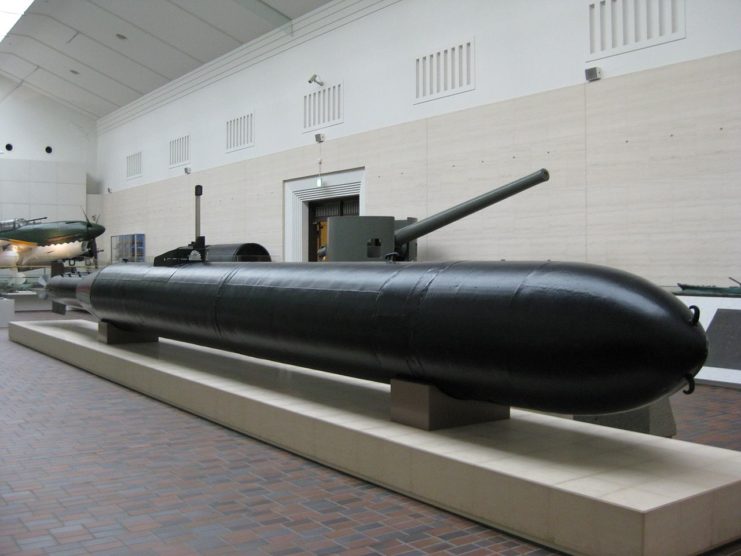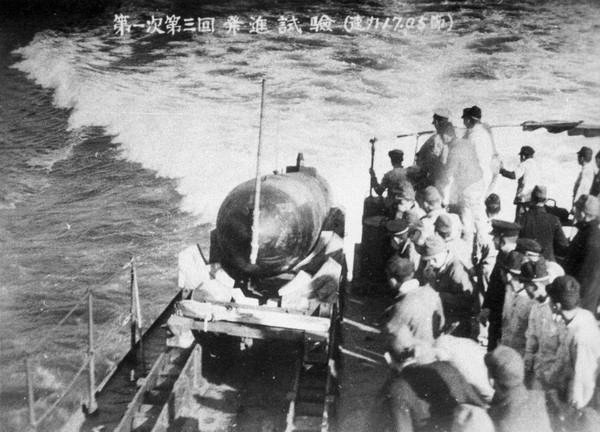Kaiten: Japan’s fully-manned kamikaze torpedos during WWII
The Japanese use of suicide tactics during WWII was based on a number of fundamental reasons. From a cultural standpoint, dying in combat was an honorable death that guaranteed you a heroic legacy. From a logistical standpoint, the Japanese military was well aware of the sheer overwhelming odds in their war against the US and knew traditional methods of fighting were not enough. Because of this, they invested heavily into suicide missions, building aircraft, weapons, and even manned torpedoes to help.
As a human remains with the attack until the end, suicide missions have the morbid but advantageous ability to be extremely accurate, especially compared to weapons delivery techniques during WWII. Dive bombing was a particularly effective means of attack, but it was fraught with danger and did not guarantee a hit. However, a kamikaze aircraft laden with explosives could be accurately flown into a target.
With the outcome of the war looking bleak, Japan authorized the construction of suicide crafts. These were organized into the Japanese Special Attack Units.
The methods of delivery for these units were kamikaze aircraft, shinyo suicide boats, fukuryo suicide divers, and kaiten submarines.
Kaiten submarines

A Kaiten, Type 1 on display at the Yūshūkan in October 2008 (Photo Credit: Nick-D / Wikipedia)
Six different types of these suicide craft were built after research began in early 1944. Only the Type 1 saw use, while the rest never passed the prototype stage.
In the early stages of kaiten development designers incorporated a means of escape for the pilot before the craft reached the target. Eventually this feature was removed, and the pilot was literally locked inside the machine. They were equipped with a self-destruct system in case they missed their target.
Type 1 was the only version to be widely used. This model was almost entirely based on the Type 93 torpedo, generally agreed to be the most advanced torpedo of the war. It incorporated the necessary modifications to fit the pilot and his controls. The pilot sat roughly in the center of the nearly 15-meter long craft and was provided with a periscope, an entry hatch, and steering controls.
Like the Type 93 torpedo, Type 1 used pure oxygen as an oxidizer for its engine. Contemporary torpedoes used normal compressed air as an oxidizer, which is only around 20% oxygen. Pure oxygen provides almost five times the amount of oxidizer for the same volume of compressed air, giving Type 93 an exceptional maximum range of 40,000 meters.
Using pure oxygen also has the benefit of reducing the bubble trails left by conventional torpedoes as the only exhaust gas is carbon dioxide, which is much more soluble in water.
The Type 1 suffered from water leaking into the pilot and engine compartment, but due to the nature of the weapon, solving these issues was a low priority.
It weighed 10 tons and carried a 1,550 kg warhead. It could reach a maximum speed of 30 knots and be able to dive to 80 meters. 300 Type 1s were built, 100 of which were used in anger.
Operating a kaiten

A Kaiten Type 1 being trial-launched from the light cruiser Kitakami (Photo Credit: Imperial Japanese Navy)
Kaiten could be launched either from a submarine or a surface vessel, although in practice only submarine launches were used. Piloting these machines was very complex.
Pilot training took place at the island of Ōzushima in the Inland Sea. The island was fully equipped for the testing of kaiten and the training of their pilots. Pilots were first trained in controlling fast boats using just a periscope and instruments. After this, they were placed in trainer kaiten armed with dummy warheads and worked through progressively harder tests. The training culminated in a submarine launch and nighttime missions.
Pilots had to be able to guide the kaiten using just a periscope and its instruments, all while accounting for the constantly decreasing weight as the oxidizer was used up. Submarines could carry kaiten on their decks, but because of the craft’s shallow dive depth, these submarines were at great risk while carrying them.
After identifying a target, the pilot would be briefed before climbing into the kaiten through its belly via a connecting tube between the submarine and the craft. He would detach the kaiten and accelerate towards the target. Once at a certain range, the kaiten would surface and the pilot would perform a visual check of the target to ensure he was on the right heading. The kaiten would slip back under the surface and make its way to the enemy vessel.
If the pilot missed and ran out of fuel, he would self-destruct the kaiten.
The advantages of human guidance throughout the craft’s trajectory proved to be of little use in practice, with kaitens causing minimal damage to the enemy. According to the US, just a few ships were sunk by kaiten, resulting in the loss of about 190 men. In return, Japan lost over 100 pilots and many hundreds more involved in the sinking of eight kaiten-carrying submarines.
The photo at the top of this page features the USS Mississinewa, according to Naval History and Heritage Command, “At 0547 on 20 November 1944, the fully laden 11,000-ton oiler USS Mississinewa (AO-59) was anchored at Ulithi Atoll when a manned Kaiten suicide torpedo hit her, resulting in a massive explosion. A second huge explosion occurred seconds later when fumes in an aviation gasoline tank detonated.” It’s still unclear if the sinking was the result of a Japanese-manned kamikaze torpedo, as no remains of the device have been recovered.
Post a Comment
0 Comments